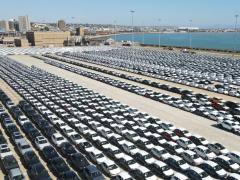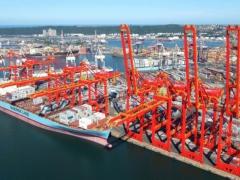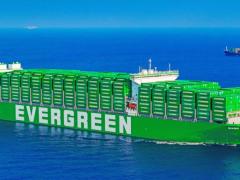Average spot freight rates from the Far East to major markets in Europe and the US rose significantly in October, defying a recent trend of steady decline, maritime intelligence platform Xeneta reports.
This sudden increase may alarm shippers preparing to tender for new contracts, but industry experts advise maintaining calm and relying on data to gain a more balanced perspective.
From the Far East to the US West Coast, average spot rates increased by 38% to $2 138 per 40ft container (FEU), while rates to the US East Coast rose 23% to $3 038 per FEU.
In Europe, spot rates from the Far East to North Europe grew by 18% to $1 968 per FEU and to the Mediterranean by 9% to $2 338 per FEU.
On Friday, October 31, with Black Friday less than a month away and airfreight rates trending up, it was clear from Xeneta’s data that early indications point to spot rates climbing again at the start of November.
For shippers, understanding the difference between spot market rates and long-term contract rates signed in the past three months is critical.
Despite the mid-October increase, average spot rates from the Far East to North Europe remain around $200 per FEU below long-term contracts.
Even if spot rates rise further in early November as expected, this may only bring them to parity with long-term rates, meaning shippers still hold a strong position in negotiations.
Simply put, shippers would question why they would lock into long-term contracts at higher rates than current short-term prices.
On the Transpacific trade route to the US West Coast, the October spike pushed spot rates slightly above long-term average rates by about $125 per FEU. This rise can partly be attributed to carriers reducing capacity too much compared to demand, leading to October experiencing the lowest deployed capacity on the US West Coast trade since April.
Demand had dropped sharply then due to the impact of sweeping tariffs.
There is also a tactical element to the timing of spot rate increases, which often coincide with the tender season. Carriers understand the importance of market sentiment and seek to avoid negotiating during periods of falling rates.
Historical patterns show that average spot rates from the Far East to North Europe have tended to rise around the start of November, following months of decline. This suggests capacity management by carriers is deliberately timed to support rate increases even as volumes traditionally fall in October onwards.
Although the spot rate increases appeared slightly earlier this year than usual, in mid-October rather than November, other factors beyond carrier capacity management are also likely to influence this spike. Despite short-term upticks, forecasts remain firm that long-term and short-term rates will continue falling into 2026 due to persistent overcapacity.
According to the Xeneta Ocean Outlook 2026, average spot rates from the Far East to North Europe are down 41% compared to a year ago, with long-term rates down 24%. On the Transpacific route to the US West Coast, spot rates have dropped 60% year-on-year and long-term rates 42%. This data suggests shippers should aim to secure better contract rates for 2026 than those negotiated for 2025.
Insights from contract negotiations a year ago offer useful guidance. Rising spot rates in the last quarter did not necessarily translate to higher long-term contract rates for agreements starting in January. Long-term contract rates at the start of 2025 remained similar to those in late 2024.
Furthermore, carriers incentivised longer contracts by offering significantly lower rates, anticipating further rate declines due to overcapacity. For example, on the Far East to Mediterranean trade, contracts over six months were priced approximately 45% lower than those between three and six months.
Short-term spot market dynamics cannot be ignored, but should also be weighed against full-year expectations. The overcapacity challenge facing carriers in 2026 is unlikely to disappear simply because they have successfully pushed spot rates up temporarily.
The global container shipping fleet is expected to grow by 3.6% in 2026, while demand is projected to increase by only 3%. This widening gap will likely intensify the overcapacity headache for carriers.
Carriers will compete aggressively for volume, offering incentives such as lower rates for longer contract commitments or the promise of improved reliability. While 2026 will remain challenging for shippers, there will be ample opportunity to negotiate favourable terms in new contracts.













